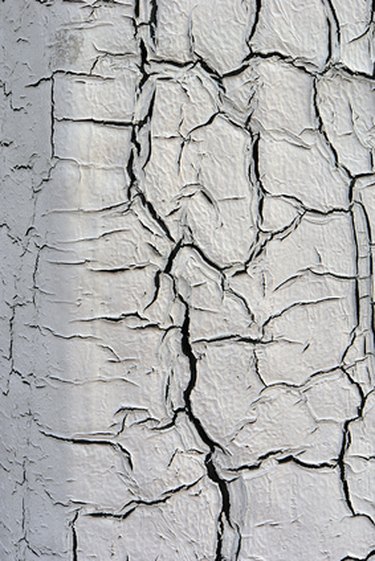Things You'll Need
Sand paper
Primer
Paint
Paint brush or roller
Paint tray

Cracking paint is the result of a few potential problems with the paint. According to Sherwin-Williams, potential causes of cracking in the paint include age, over-thinning of the paint during painting or a lack of surface preparation before painting. When the paint starts to crack, stopping the cracking and repainting can prevent further spreading of peeling paint.
Step 1
Determine the cause of the cracking paint. There are a few potential causes, such as aging or moisture. In the case of moisture, it is important to get a paint that can withstand humidty, such as the paint used in bathrooms.
Video of the Day
Step 2
Sand the cracking paint. Use a fine-grit sandpaper, such as 400 or 600 grit, for the best sanding results. Sand according to the specific surface. For example, sand the direction of the grain of wood surfaces. If the surface does not have a grain direction, use the sandpaper in one back and forth direction. Sand until the surface is smoothed and the cracks in the paint are gone.
Step 3
Apply a primer to the painting surface. Priming the surface ensures the paint has an appropriate preparation and prevents cracking in the new paint. One potential cause of the cracking is too little preparation. Allow the primer to dry.
Step 4
Look at the paint directions. Some paints require diluting while others are ready to paint. If it requires diluting, always follow the directions for water measurements on the paint can accurately to prevent cracking from thinning the paint too far.
Step 5
Pour the paint into a painting tray. Apply the paint to the surface with either a paint brush or a roller. Paint brushes are ideal for smaller surface areas while rollers are ideal for larger surface areas like a wall. Allow the paint to dry and apply another coat of paint.
Warning
Check for foundation shifting or problems if there is gapping and cracking in the wall rather than the paint. Take precautions against lead for older homes with old paints.
Video of the Day